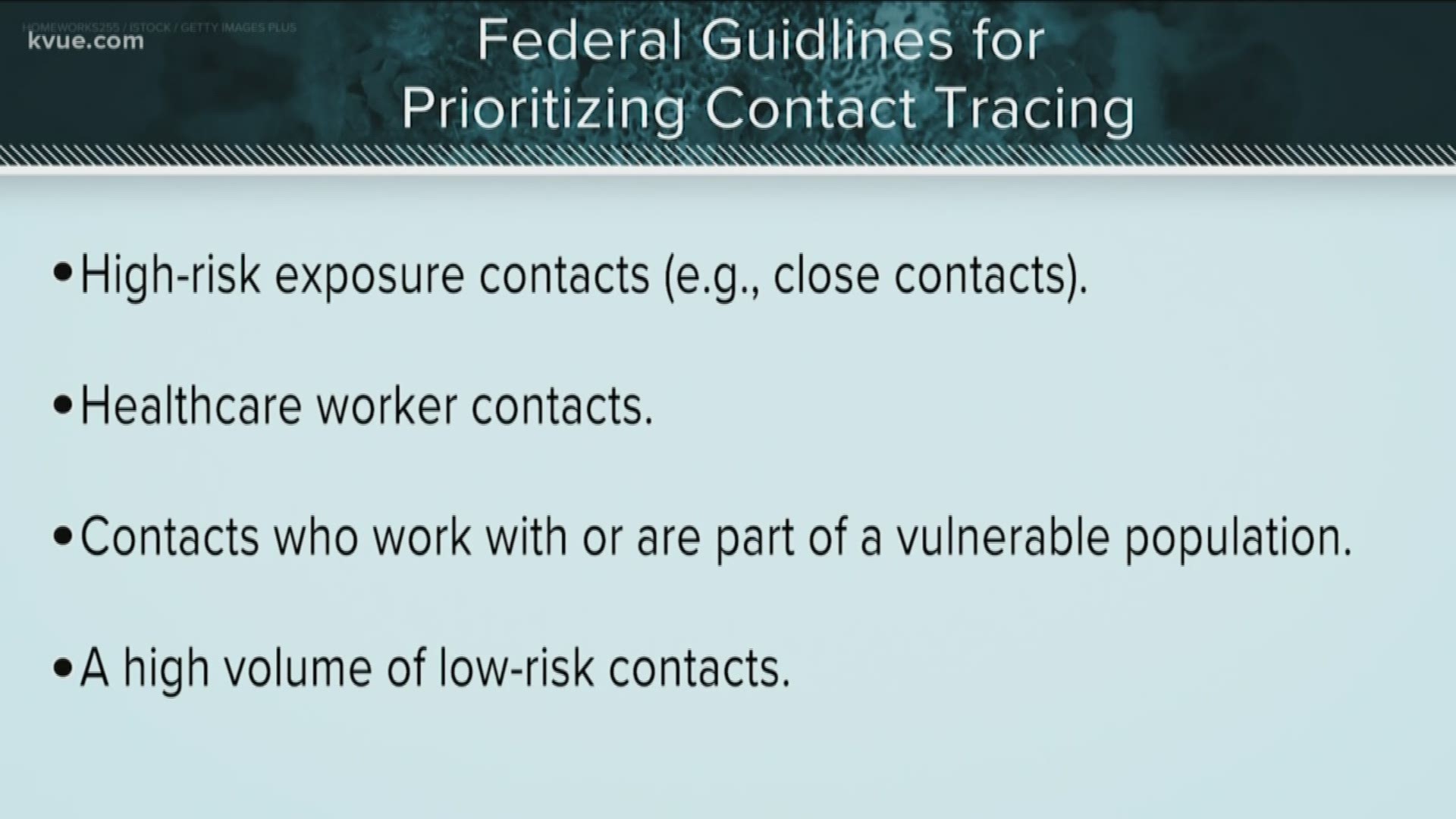AUSTIN, Texas — “It became impossible at one point to be able to trace everyone in the community who had COVID-19," Dr. David Fleeger said.
Fleeger heads up Texas Medical Association. After Gov. Greg Abbott's announcements on Monday to start reopening more industries in Texas, Fleeger – as spokesperson for the TMA – supported Abbott's decision but called for more testing capability in Texas.
Right now, Texas ranks 48th in the U.S. when it comes to completed COVID-19 tests per capita. The state finally tested more than 1% of its population as of Tuesday, with just over 300,000 tests being completed.
“We only can open up and feel comfortable with it when we have that ability not only to test but to check the contacts of all those who test positive," Fleeger said.
As Fleeger mentioned, contact testing took a backseat as new cases continued to drastically increase. Senior centers, medical centers and other such locations continued with contact tracing, but not with the general population, according to Fleeger.
As of Monday, the state brought together more than 1,100 people to be contact tracers. According to the governor's Open Texas report, tracers come from schools of public health, community health workers, medical and nursing students and public school nurses.
In addition to the 1,100 tracers, the state developed an online app for people to check if they should be tested for COVID-19, as well as a listing of locations of testing centers. In conjunction with the app, the state created a call center for the same purpose.
As contact tracing returns to the forefront of the fight against the coronavirus, those who test positive for the virus need to continue self-quarantining. A coronavirus-positive patient will then work with a tracer to determine with whom they had "extensive contact." Each of those people, for being exposed to COVID-19, will self-quarantine. If none develop symptoms, then all the contacts will resume their daily lives. If any develop symptoms, they will get tested and the process will restart for each of their contacts.
RELATED:
Phase II of the contact tracing plan outlines making sure the app and call center are available statewide and increasing the number of tracers by 1,000.
The governor's office outlined a third phase to the contact tracing plan that includes increasing the number of tracers from approximately 2,100 to 4,000. Phase III will start on May 11.
Contact tracing helps slow the spread of the virus as quickly as possible once somebody is infected. Abbott called it "box in the virus" during his announcements on Monday.
Testing availability and accessibility will become even more important to accommodate contact tracing, in order to verify both who has the virus and who does not.
"For instance, as a surgeon, I’ll be doing elective surgery and my patients will be tested for COVID-19 before we do the surgery to make sure we’re not putting them at any extra risk," Fleeger said.
Federal guidelines released on April 16 outline how states should prioritize contact tracing:
- High-risk exposure contacts (e.g., close contacts)
- Health care worker contacts
- Contacts who work with or are part of a vulnerable population
- A high volume of low-risk contacts
PEOPLE ARE ALSO READING:

